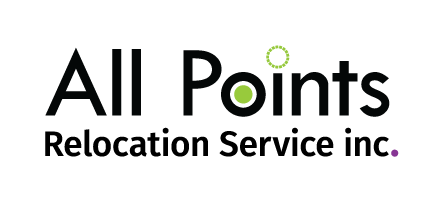Visa, Status, Permit, eTA
Arguably the most common misnomer in Canadian immigration matters is the interchangeable use of the words “visa” and “permit” when describing an applicant’s situation. This mistake is made by applicants and immigration professionals alike; we hope to clear up this confusion in this short article. We will also define the term “status” which is important to understand when speaking of visas and permits. Additionally, we will clarify what an “electronic travel authorization” (eTA) is, and whom it is required for.
Please note that as we are dealing with Canadian immigration specifically, we will be explaining how the terms are used in Canada and in the context of Canadian immigration. Other jurisdictions, for example the United States, use the terms in a slightly different way.
Visa
A visa is a term used to describe the physical sticker placed in the passport of a person who requires this document to seek entry to Canada. A visa is obtained by completing an application for a temporary resident visa (TRV) and submitting it to the federal government (Immigration, Refugees and Citizenship Canada, abbreviated as IRCC) for processing. Only those travelling on passports of countries which are not TRV-exempt need to apply for, and receive, a visa in order to be allowed to travel to Canada by air, sea, or land. Examples of non-TRV exempt countries, meaning countries whose passports require a visa to travel to Canada, include India, the Philippines, China or, for most applicants, Brazil. Having a visa is not a guarantee that entry to Canada will be allowed; it only means that the person has been given permission to appear at Canada’s border and seek entry to Canada via the usual process which involves communication with the Canada Border Services Agency (CBSA) officers.
Status
A status is the person’s legal situation in Canada. It can be either permanent or temporary. Examples of a permanent status are being a citizen or a permanent resident. Workers, students, or visitors for business or pleasure are temporary residents. A status is not a physical document; it is a person’s legal standing which is usually defined by the documentation that person holds, for example, a type of permit.
If a TRV-exempt passport holder (e.g. Germany, the United Kingdom, the United States, or Australia) sought entry to Canada, the CBSA officer might put an ink stamp in his passport. That stamp grants the person the status of a temporary resident (visitor) for their duration of stay in Canada. The visitor status is typically granted for up to 6 months. However, the CBSA officer has a discretionary power to admit the visitor for a shorter or, in rare or specific cases, longer period of stay.
Permit
A permit is a temporary status document. A status document grants a specific status to the holder of the document. Examples of permits include a work permit, a study permit, a visitor record, or a temporary resident permit to temporarily overrides inadmissibility (for foreign nationals who are otherwise inadmissible). Generally, a permit is obtained by applying to the IRCC and receiving preliminary approval, known as a “letter of introduction”, before traveling to Canada and having the permit printed at the border by a CBSA agent. It is important to remember that Canadian status documents can only be issued in Canada. The permit is a colourful piece of paper upon which are listed details of the person for whom it was printed, including their name and date of birth, as well as the duration of the permit, which generally reflects the duration of the status it grants. For example, a work permit with duration of 01 January 2024 to 31 December 2025 grants the holder a two-year temporary status as a worker. It is important to remember that permits are not travel documents, and therefore cannot allow re-entry to Canada on their own. They do not replace visas for ones who require them pursuant to the law. If a person outside of Canada requires a visa to enter Canada and his visa expired, but his permit is still valid, the person must apply for and receive a new visa before he will be allowed to seek entry to Canada, even
though he has a valid permit. However, there is a limited number of exemptions from this requirement. Always consult your licensed immigration services provider if you believe that you, as a temporary resident who is a permit holder, may be exempt from this requirement and may be allowed to re-enter Canada without a visa, including on an eTA (to be discussed below).
Electronic Travel Authorization (eTA)
An electronic travel authorization (eTA) is essentially a security check for foreign nationals who are visa-exempt passport holders who seek to travel to, or transit through, Canada by air. The eTA is electronically linked to the passport of the traveler, and is valid for up to five (5) years, or until the expiry of the passport, whichever comes first. If a new passport is obtained, a new eTA is required, as the eTA is linked to the passport itself. An eTA is usually obtained by the traveler by completing a short application on a Canadian government website and paying a fee of $7 CAD. It is important to understand that the eTA does not replace the requirement for a visa or permit, nor does it, in itself, grant status.
Summary
A visa is a travel document only. It is used to prove to the relevant authorities that Canada has allowed the visa holder to travel to its borders and seek permission to enter the country. A visa does not grant status. A status is a person’s legal standing in Canada, and is usually granted by a permit which is a status document. A permit is not a travel document and cannot replace a visa, but it is a document which proves temporary immigration status in Canada for workers, students, and different types of visitors. An eTA is a security check that is linked to a traveler’s passport and does not replace a visa or a permit, nor grant status.

